The National Library Creative Residency invites creatives from different artistic disciplines to draw inspiration from the collections of the National Library, Singapore and the National Archives of Singapore.
About the National Library Creative Residency

We are keen to collaborate with creatives who employ innovative and imaginative methods to conceptualise new works inspired by the digital and physical collections from the National Library, Singapore (NLS) and the National Archives of Singapore (NAS).
Residents are encouraged to reimagine or reinterpret the collections in ways that provide fresh perspectives and make them more engaging to a wider community of users. The Residents are required to share their concepts, and this could take the form of videos, publications, literary works, artworks, musical compositions, or more. Such sharing helps to enhance or reshape public discovery, exploration, and engagement with our collections and content.
We are on the lookout for projects that make effective and meaningful use of our collections. Applicants are to propose and employ suitable methods to conceptualise new creative works inspired by the collections. The themes include but are not limited to the following:
- Social history of Singapore through photographs, oral histories, and other relevant collections;
- Singapore’s visual culture in design and everyday life;
- Stories and narratives from Singapore literature.
We are on the lookout for projects that make effective and meaningful use of our collections. Applicants are to propose and employ suitable methods to conceptualise new creative works inspired by the collections. The themes include but are not limited to the following:
- Social history of Singapore through photographs, oral histories, and other relevant collections;
- Singapore’s visual culture in design and everyday life;
- Stories and narratives from Singapore literature.
The National Library Creative Residency is open to Singapore-based creative practitioners (individuals or collectives) working in any discipline or form of expression. This includes but is not limited to visual and digital media artists, composers, musicians, designers, writers, and creatives. We also welcome inter-disciplinary creative practitioners.
Successful applicants should possess relevant research and artistic credentials or equivalent; preferably have an established record of achievement in their chosen field of research and the potential to excel further.
The National Library Creative Residency is open to Singapore-based creative practitioners (individuals or collectives) working in any discipline or form of expression. This includes but is not limited to visual and digital media artists, composers, musicians, designers, writers, and creatives. We also welcome inter-disciplinary creative practitioners.
Successful applicants should possess relevant research and artistic credentials or equivalent; preferably have an established record of achievement in their chosen field of research and the potential to excel further.
The award of the Residency is for a period of six months:
- A stipend of S$3,500 per month will be provided to help Residents meet their living and local expenses.
- In addition to the stipend, Residents will be provided with up to S$6,000 (on reimbursement basis) for the purchase of materials for the conceptualisation, or materials that are directly related to the project and/or used for the duration of the Residency.
- Residents shall be responsible for obtaining all required licenses, permits, permissions, and other authorisation to use any photographs, copyrighted materials or other property, or other rights belonging to third parties that are used for the project.
The award of the Residency is for a period of six months:
- A stipend of S$3,500 per month will be provided to help Residents meet their living and local expenses.
- In addition to the stipend, Residents will be provided with up to S$6,000 (on reimbursement basis) for the purchase of materials for the conceptualisation, or materials that are directly related to the project and/or used for the duration of the Residency.
- Residents shall be responsible for obtaining all required licenses, permits, permissions, and other authorisation to use any photographs, copyrighted materials or other property, or other rights belonging to third parties that are used for the project.
All Residents are required to sign an agreement which includes the following obligations:
• Develop and/or produce a conceptualisation, completed work, or body of works inspired by NLB’s collections. Depending on the proposal, this can be, but is not limited to, artworks, musical compositions, digital visualisations, literary works, graphic design, or video games. All productions and conceptualisations will be archived by NLB where possible.
• Participate in an engagement session with NLB staff on their use of NLB’s collections.
• Give a public presentation, which may be live-streamed, based on their Residency research.
• Acknowledge NLB in presentations or publications of the works resulting from the Residency.
• Submit a final report/write-up of 1,000 to 3,000 words on the project, detailing the creative and thought processes behind the works.
All Residents are required to sign an agreement which includes the following obligations:
• Develop and/or produce a conceptualisation, completed work, or body of works inspired by NLB’s collections. Depending on the proposal, this can be, but is not limited to, artworks, musical compositions, digital visualisations, literary works, graphic design, or video games. All productions and conceptualisations will be archived by NLB where possible.
• Participate in an engagement session with NLB staff on their use of NLB’s collections.
• Give a public presentation, which may be live-streamed, based on their Residency research.
• Acknowledge NLB in presentations or publications of the works resulting from the Residency.
• Submit a final report/write-up of 1,000 to 3,000 words on the project, detailing the creative and thought processes behind the works.
Each application must include:
1. A completed application form. In providing information on academic credentials and previous experience, scanned copies of testimonials and documents are acceptable and must be attached at the time of application. If you are selected for the Residency, the original or certified copies bearing the university/company seal must be presented for verification.
2. A detailed proposal (not exceeding 10 pages, excluding references and annexes) that includes the following:
a. A comprehensive outline of the proposed topic of research, including details of the NLS and/or NAS collections and resources to be used and how they are crucial to the research objectives. Please also specify if you are using materials from other sources.
b. Description of the intended outcome of the project, including the form that the creative output would take, for example, painting, video, performance, script, etc., and the possible platforms (within NLB or in other contexts) where this output can be showcased.
c. Key project milestones and estimated time needed for each milestone.
d. How the proposed project will provide new perspectives on the NLS and/or NAS collections.
3. A Curriculum Vitae (CV) that includes the following information:
a. Details of research awards or residencies previously and concurrently held.
b. Details of professional seminars/conference papers/public lectures presented.
c. A list of major publications and exhibitions participated in.
d. Portfolio of at least five (5) projects/works that demonstrates relevance to the proposed idea.
e. Details of any other past or current involvement in creative projects.
4. Reference letters from two referees that should address the following:
a. The applicant’s qualifications, ability and experience.
b. The quality of the applicant’s previous works.
c. The applicant’s demonstrated capacity to complete projects within a reasonable time frame, and the feasibility of the project in terms of available resources and time or other constraints.
d. The applicant’s awareness of relevant available sources in NLS and/or NAS and an assessment of whether these sources are likely to support the research proposed.
e. Whether the project will make a substantial contribution to knowledge in the field.
Applications should be emailed to NL_Creative_Residency@nlb.gov.sg by 30 May 2025.
Late or incomplete applications will not be accepted. Shortlisted applicants may be invited for an interview. Notification of acceptance or rejection will be made known within five months of the closing date.
Each application must include:
1. A completed application form. In providing information on academic credentials and previous experience, scanned copies of testimonials and documents are acceptable and must be attached at the time of application. If you are selected for the Residency, the original or certified copies bearing the university/company seal must be presented for verification.
2. A detailed proposal (not exceeding 10 pages, excluding references and annexes) that includes the following:
a. A comprehensive outline of the proposed topic of research, including details of the NLS and/or NAS collections and resources to be used and how they are crucial to the research objectives. Please also specify if you are using materials from other sources.
b. Description of the intended outcome of the project, including the form that the creative output would take, for example, painting, video, performance, script, etc., and the possible platforms (within NLB or in other contexts) where this output can be showcased.
c. Key project milestones and estimated time needed for each milestone.
d. How the proposed project will provide new perspectives on the NLS and/or NAS collections.
3. A Curriculum Vitae (CV) that includes the following information:
a. Details of research awards or residencies previously and concurrently held.
b. Details of professional seminars/conference papers/public lectures presented.
c. A list of major publications and exhibitions participated in.
d. Portfolio of at least five (5) projects/works that demonstrates relevance to the proposed idea.
e. Details of any other past or current involvement in creative projects.
4. Reference letters from two referees that should address the following:
a. The applicant’s qualifications, ability and experience.
b. The quality of the applicant’s previous works.
c. The applicant’s demonstrated capacity to complete projects within a reasonable time frame, and the feasibility of the project in terms of available resources and time or other constraints.
d. The applicant’s awareness of relevant available sources in NLS and/or NAS and an assessment of whether these sources are likely to support the research proposed.
e. Whether the project will make a substantial contribution to knowledge in the field.
Applications should be emailed to NL_Creative_Residency@nlb.gov.sg by 30 May 2025.
Late or incomplete applications will not be accepted. Shortlisted applicants may be invited for an interview. Notification of acceptance or rejection will be made known within five months of the closing date.
Applicants will be assessed based on the following criteria:
• Originality and artistic merit in proposed creative work.
• A strong track record of artistic/creative achievement and production demonstrated through a portfolio of previous work and referees’ letters. For digital projects, applicant must possess the requisite skills and software to build and deliver the project independently.
• An effective concept and project plan explaining the relevance of specific library and/or archives’ collections to the project, how they will be used in developing and meeting the objectives of the creative work and residency. The proposal must be achievable within timeframe of six months.
Applicants will be assessed based on the following criteria:
• Originality and artistic merit in proposed creative work.
• A strong track record of artistic/creative achievement and production demonstrated through a portfolio of previous work and referees’ letters. For digital projects, applicant must possess the requisite skills and software to build and deliver the project independently.
• An effective concept and project plan explaining the relevance of specific library and/or archives’ collections to the project, how they will be used in developing and meeting the objectives of the creative work and residency. The proposal must be achievable within timeframe of six months.
2021
Jean Tay
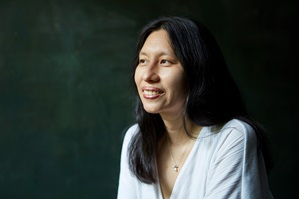
Playwright Jean Tay studies the history of Singapore’s approach in the containment of contagious diseases, as well as public attitudes and stigmas surrounding sickness through the histories of different hospitals and quarantine sites (such as St John’s Island, the old St Andrew’s Mission Hospital and old Middleton Hospital), in order to bring these histories to life through theatre. In doing so, she delves into oral history accounts, public histories of hospitals and quarantine sites, as well as the personal memories of individuals with unique experiences there.
Khairulddin Wahab
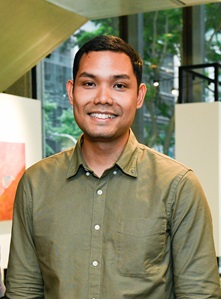
Artist Khairulddin Wahab investigates the historical process of disenchantment in the natural world through Singapore’s environmental history, working with materials related to plantation agriculture and land use in Singapore, which have informed and formed the land. He draws from natural, material, and environmental resources in the National Library and National Archives, in particular materials such as cartographic surveys, colonial representations of the island and plantation and aerial photographs, using these resources as departure points for a new series of paintings.
A Stubborn Bloom
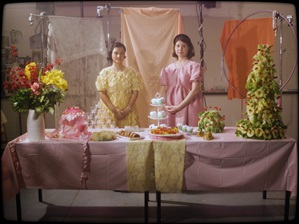
The collective A Stubborn Bloom takes cues from visual and social life in Singapore in the 1990s to develop a video piece revolving around a fictional teen character. Inspired by the collections from the National Library, the National Archives and Asian Film Archive, the duo have found a multiplicity of entry points to relook Singaporean life in this period. Highlights from their research include artistic productions from the 1990s such as book manuscripts, theatre plays, music and indie films, newspaper articles on youth, architectural publications, tertiary prospectus and teen magazines. These materials provide clues to the embodied experience of teen-hood and the structural developments in place that had ushered Singapore into the new millennium.
Tan Shao Han
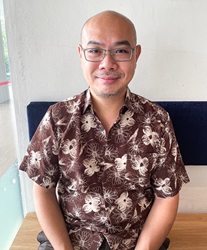
Tan Shao Han draws upon the National Library’s and National Archives’ collections of primary and secondary sources, oral history interviews, microfilms, and photos to aid in conceptualising and designing a tabletop roleplaying game (TTRPG), “Da Xia” / “大侠”. "Da Xia" is a game of historical fiction inspired by the first half of the 20th century. Players assume the titular role of “Da Xia" or "gallant” who is a desperate hero caught up in wartime upheavals. While historical imaginations of Singapore’s WWII experiences are often concerned with nations and empires' military and geopolitical objectives, “Da Xia” takes a different, more personal direction to focus on the everyday lives and quotidian heroics of civilians and survivors during WWII and the Japanese Occupation. This game draws inspiration from various Chinese literary and storytelling traditions (such as the Nanyang, gongan, and wuxia genres) to imagine shadowy worlds of danger and skulduggery during this tumultuous time.
2022
Chrystal Ho
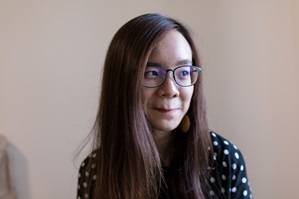
"Where the flowers never stop blooming" is an eco-poetry project that explores the relationships between human and nature in Singapore, by using the garden as a key motif. It draws on local histories of the garden to explore the idea of Singapore as not just a “City in a Garden”, but the city-state itself as a garden: a constructed site that mediates human-nature relations.
Fyerool Darma
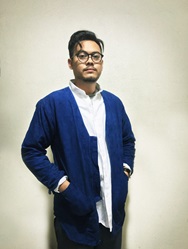
Fyerool Darma’s project takes inspiration from a Straits Times article in 1958, titled “On Sale Soon: Cloth Made in Malaya,” and expands into enquiries on the existence of textile mill factories in Singapore. His research aspires to provide an index of the various factories, explore the formation of The Malayan Textile Mills Limited in 1952, and understand the motivations for its dissolution in the 1960s. The project also extends into understanding how dissolutions of the textile mill and the failed Singapore Handicraft Center were motivated partly by the shift towards the Export Oriented Industrialisation (EOI) in Singapore. The research will also examine the contributions rendered by the artists from the textile mill and Singapore Handicraft Center.
Kaylene Tan
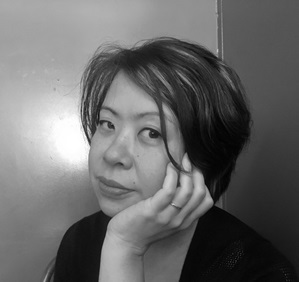
“The Streets on Fire” is a fictional audio-drama set during Singapore’s 1964 communal riots. Inspired by historical events and characters, the action takes place over four nights when the island was in lockdown. In the story, racial and personal conflicts are played out on the streets and in the police radio control room, where women police officers were in charge. Through in depth archival and academic research, The Streets on Fire presents one of Singapore’s most defining historical events from a social and human perspective, with female protagonists driving the narrative.
Saleem Hadi

Titled “Hybrid Storytelling in Horror Narratives”, Saleem Hadi’s project will heighten awareness on Singapore’s horror literature amongst locals and foreigners; inspire youths to use NLB’s and NAS’ digital and physical collections to create new engaging works; and show possibilities of how different assets of the past can be juxtaposed to form new meanings and significances in the present times.
2023
Eva Tang
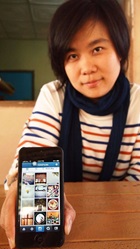
“In Search of The Descendants of ___" celebrates the legacy and art of the late Kuo Pao Kun and his influence on Singapore Chinese Theatre. By documenting and updating the working processes of theatre practitioners who have performed in iconic roles in Pao Kun's plays, the project will share how they revisit these works in relation to current social issues.
Sha Sharif and Weiqin Chay

“Yeh Yeh A-Go-Go: An Interpolation on the Sonic and Sartorial Zeitgeist of Pop Yeh Yeh” investigates the intermixing of local and global trends shaping popular music, fashion and youth subculture from the 1960s to early 1970s in Singapore. It speculates through creative interpretation Pop Yeh Yeh elements of retrofuturism that is distinctly Singaporean, distinctly Malay, and ambivalently both local and cosmopolitan. The project hopes to offer a modest yet critical intervention; proposing for a Gesamtkunstwerk that fuses a popular Malay music style and mass fashion history. Creatively, Sha and Weiqin hope to experiment with Do-it-yourself musicking, communal modes of songwriting, and the period’s modes of fashion consumption.
Myra Loke, Tan Wei Ting and Han Xuemei
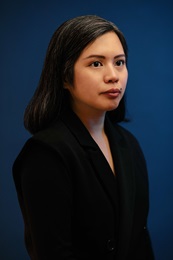
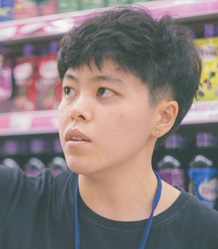
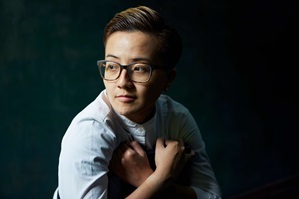
“We Thought We Knew Collectively Where We Were Going” is an artistic research project about the relationship between happiness and the prevailing economic system at different points of time. Diving into individual, family and social narratives about happiness, the project hopes to investigate how they influence the values and sense of happiness for people from three different generations: Myra, Wei Ting, and Xuemei’s Generation (1981–1996), also known as “millennials”; their Parents’ Generation (1946–1964), also known as “baby boomers”; and their Grandparents’ Generation (1928–1945), also known as “silent generation”.
2024
Alfian Sa'at
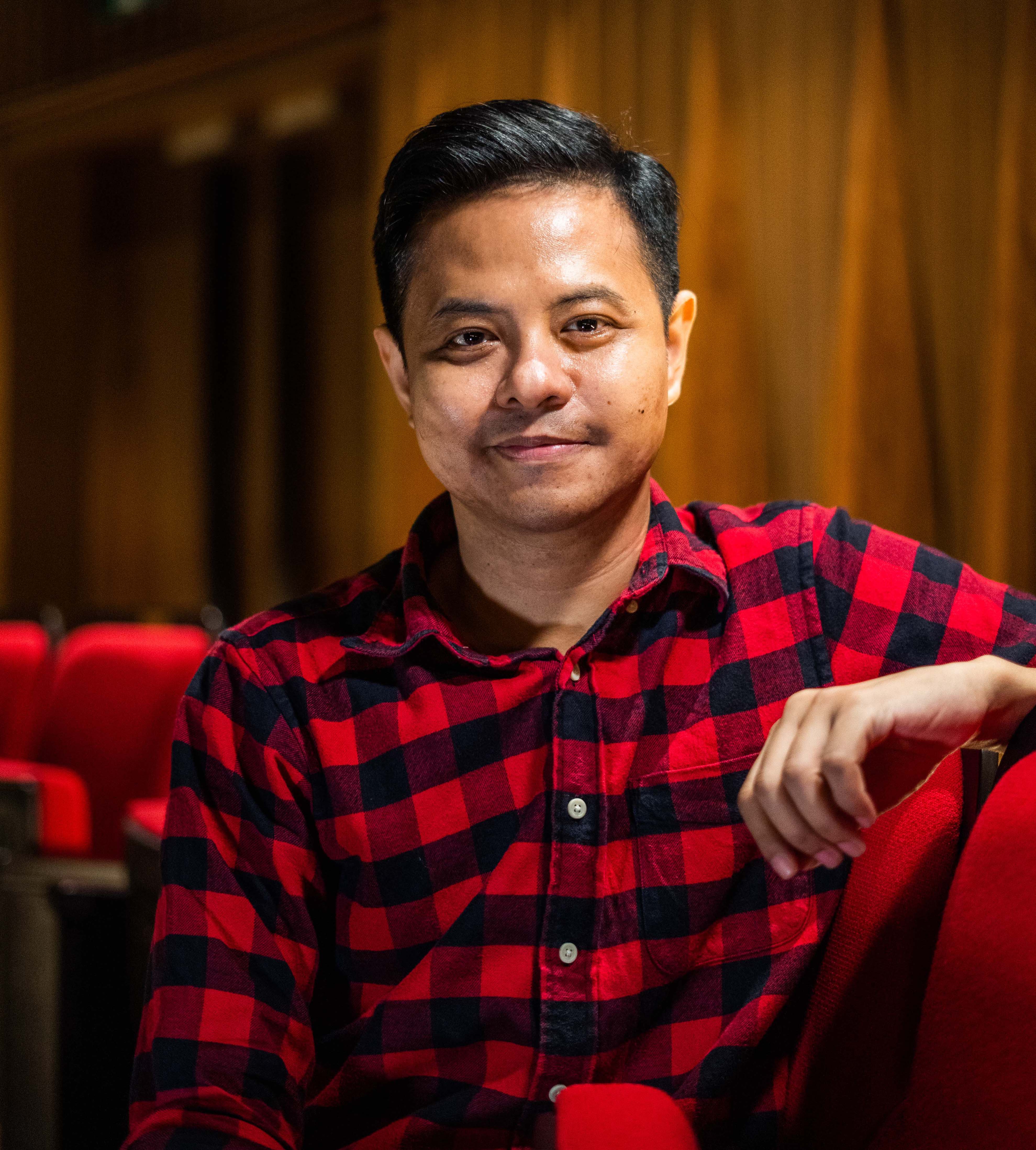
Alfian's project, 25 Hawkins Road, is a work of documentary theatre about a refugee camp in Singapore that had hosted Vietnamese refugees between 1978 and 1996. Unfortunately, no physical trace of the camp remains, and former camp residents who make return pilgrimages are often disappointed by its total disappearance. By creating a performance based on archival materials such as photographs, newspaper articles and oral history interviews, the work attempts to tell the stories of those who passed through the camp, from the camp superintendents, the Singaporean volunteers to the refugees themselves.
Felix Cheong
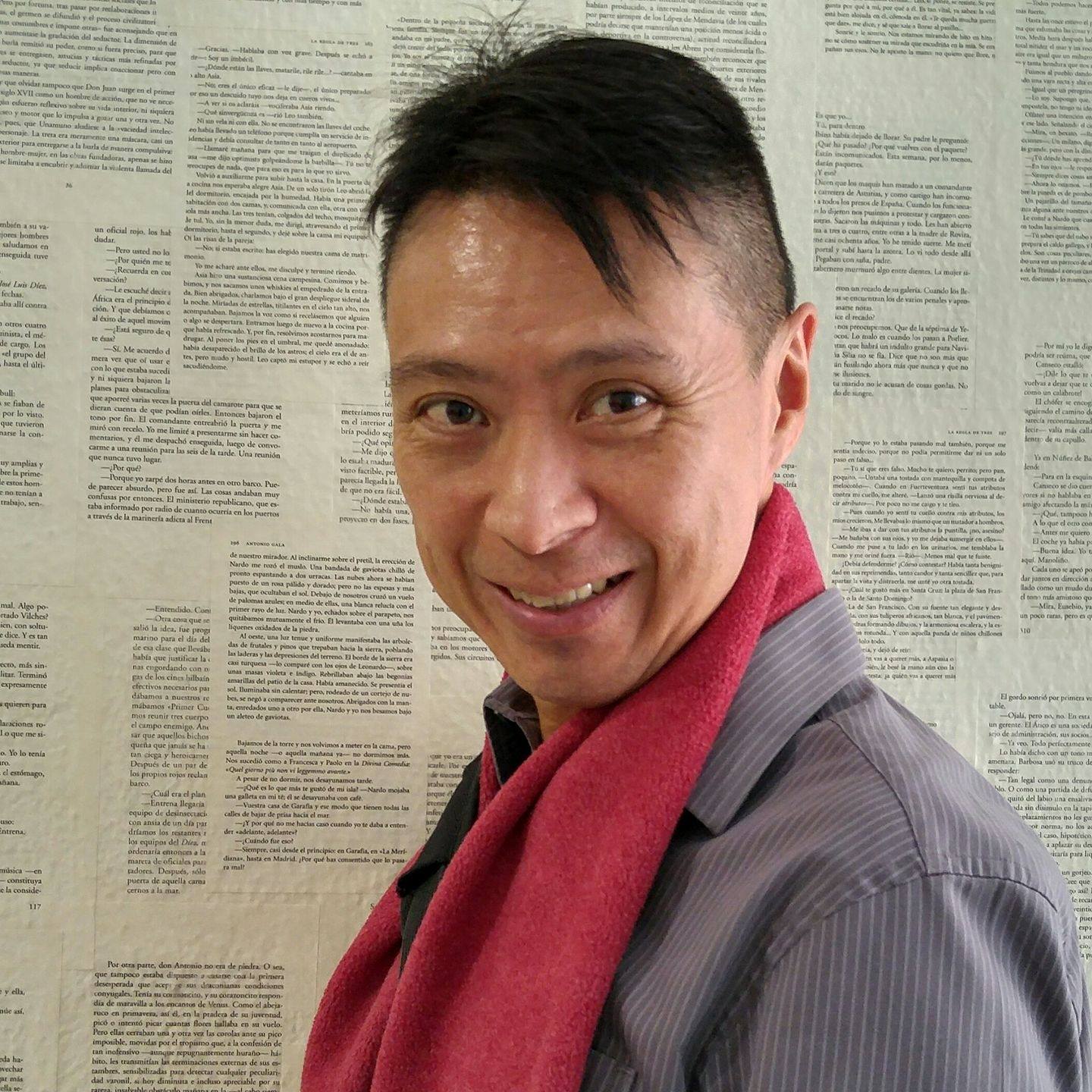
Felix's project, Out of the Night that Covers Me, is a graphic novel inspired by the real life riot between Hokkiens and Teochews in 1854 that killed more than 500 people and destroyed 300 homes. It was Singapore's deadliest riot on record, far surpassing the death toll of racial riots in the 1950s and 60s. Interestingly, our history books seldom mention this 10-day incident, which was sparked by tensions that had been simmering in the Chinese immigrant community for some time. The powder keg came in the form of a martial arts group, Xiao Dao Hui (Short Dagger Sect), which had fled to Singapore after failing to overthrow the Qing Dynasty. My graphic novel will explore the human stories between these conflicts.
Green Zeng
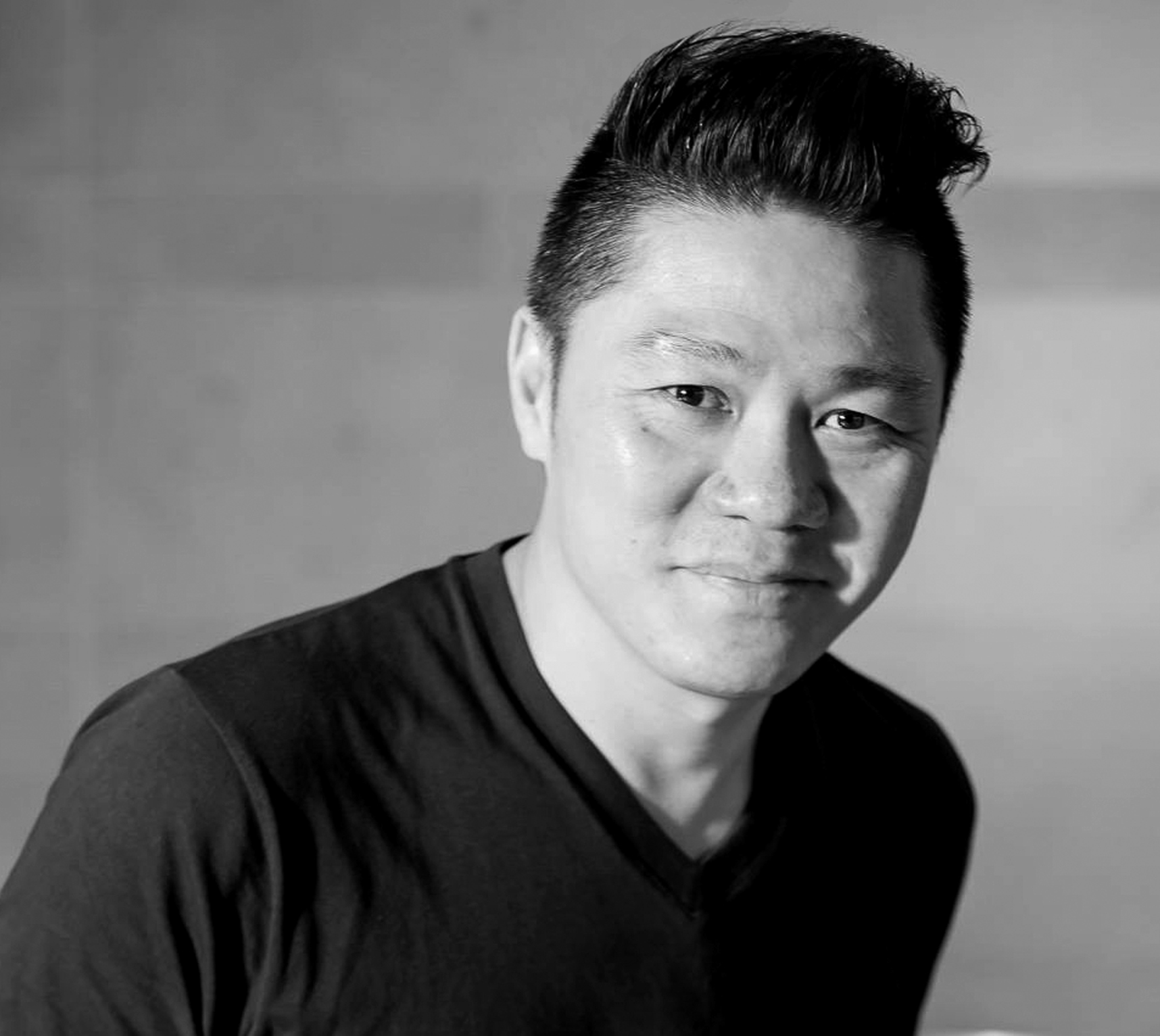
Green's project, The Chinese School Student Movement & the Hsueh-Hsih Campaign, is a research-based art project that explores issues related to history, the Chinese school student movement, communism and identity. The project examines how the Communist Party of Malaya (CPM) used the "Hsueh-Hsih" campaign and propaganda activities to indoctrinate students with Communist content and ideology.
ila
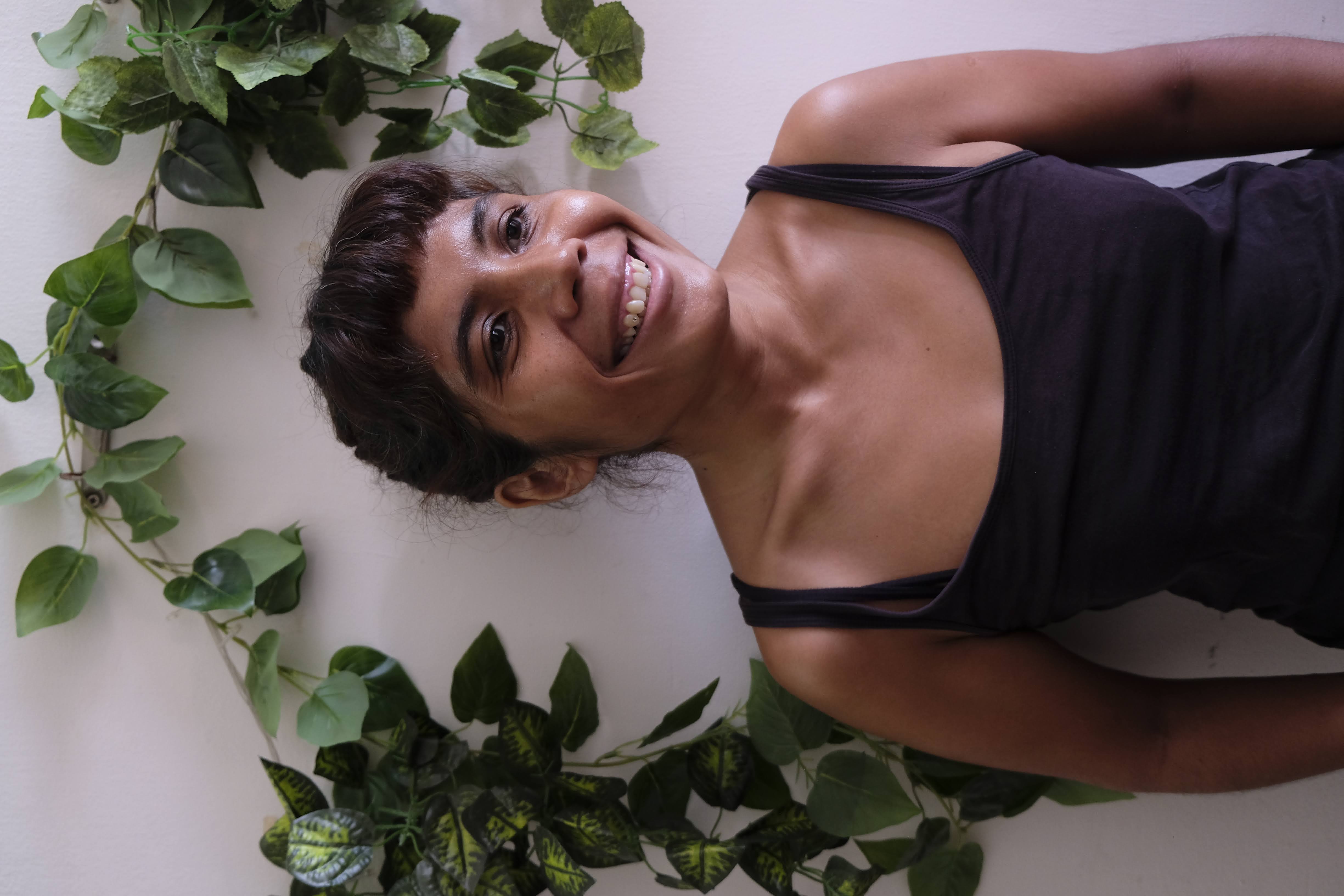
ila's project, Instrumental Plot, takes its name from a series of maps drawn up in 1970 in various parts of Singapore mainland and offshore islands. In almost all of the offshore islands and some parts of Singapore, mangroves make up a large part of the ecology. What was our relationship to the mangroves then versus now? Are we able to reconcile our ties of kinship with the mangroves? What do we wish to cultivate with the mangroves in and for the future? The project aims to trace these instrumental shifts through the archives and examine these questions intimately.
Lai Chee Kien and Koh Hong Teng

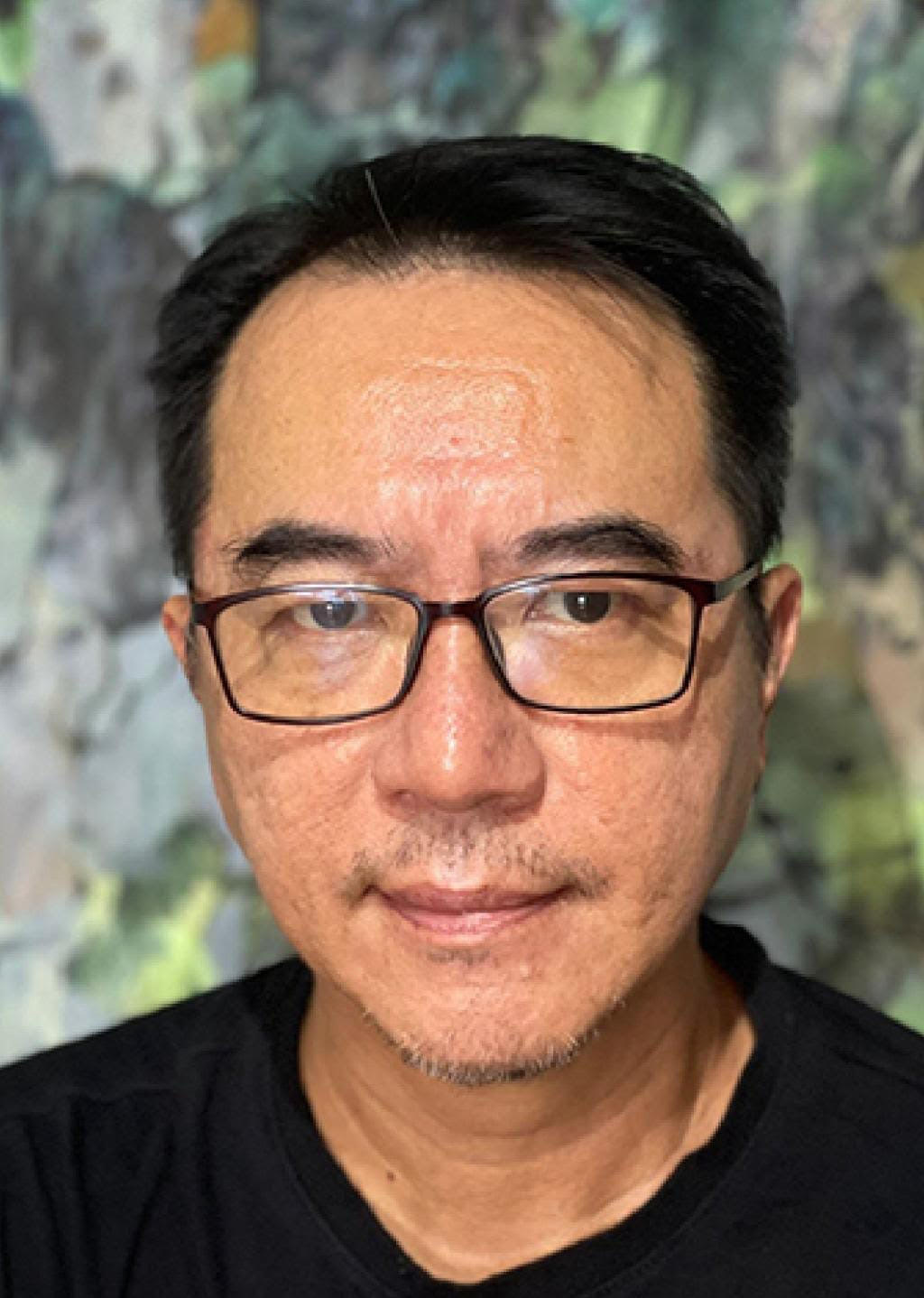
Tigers in the Lion City is a graphic novel project by Lai Chee Kien and Koh Hong Teng, comprising several stories each with the tiger as the central protagonist. Tigers were creatures which had inhabited Singapore until their disappearance from the island, but they continued to figure in state emblems, folklore and customs. It is hoped that these stories, based on historical narratives or tales, permit the retelling of the country's various historical episodes as well as place histories in a refreshing and accessible way.
2021
Jean Tay

Playwright Jean Tay studies the history of Singapore’s approach in the containment of contagious diseases, as well as public attitudes and stigmas surrounding sickness through the histories of different hospitals and quarantine sites (such as St John’s Island, the old St Andrew’s Mission Hospital and old Middleton Hospital), in order to bring these histories to life through theatre. In doing so, she delves into oral history accounts, public histories of hospitals and quarantine sites, as well as the personal memories of individuals with unique experiences there.
Khairulddin Wahab

Artist Khairulddin Wahab investigates the historical process of disenchantment in the natural world through Singapore’s environmental history, working with materials related to plantation agriculture and land use in Singapore, which have informed and formed the land. He draws from natural, material, and environmental resources in the National Library and National Archives, in particular materials such as cartographic surveys, colonial representations of the island and plantation and aerial photographs, using these resources as departure points for a new series of paintings.
A Stubborn Bloom

The collective A Stubborn Bloom takes cues from visual and social life in Singapore in the 1990s to develop a video piece revolving around a fictional teen character. Inspired by the collections from the National Library, the National Archives and Asian Film Archive, the duo have found a multiplicity of entry points to relook Singaporean life in this period. Highlights from their research include artistic productions from the 1990s such as book manuscripts, theatre plays, music and indie films, newspaper articles on youth, architectural publications, tertiary prospectus and teen magazines. These materials provide clues to the embodied experience of teen-hood and the structural developments in place that had ushered Singapore into the new millennium.
Tan Shao Han
Tan Shao Han draws upon the National Library’s and National Archives’ collections of primary and secondary sources, oral history interviews, microfilms, and photos to aid in conceptualising and designing a tabletop roleplaying game (TTRPG), “Da Xia” / “大侠”. "Da Xia" is a game of historical fiction inspired by the first half of the 20th century. Players assume the titular role of “Da Xia" or "gallant” who is a desperate hero caught up in wartime upheavals. While historical imaginations of Singapore’s WWII experiences are often concerned with nations and empires' military and geopolitical objectives, “Da Xia” takes a different, more personal direction to focus on the everyday lives and quotidian heroics of civilians and survivors during WWII and the Japanese Occupation. This game draws inspiration from various Chinese literary and storytelling traditions (such as the Nanyang, gongan, and wuxia genres) to imagine shadowy worlds of danger and skulduggery during this tumultuous time.
2022
Chrystal Ho

"Where the flowers never stop blooming" is an eco-poetry project that explores the relationships between human and nature in Singapore, by using the garden as a key motif. It draws on local histories of the garden to explore the idea of Singapore as not just a “City in a Garden”, but the city-state itself as a garden: a constructed site that mediates human-nature relations.
Fyerool Darma

Fyerool Darma’s project takes inspiration from a Straits Times article in 1958, titled “On Sale Soon: Cloth Made in Malaya,” and expands into enquiries on the existence of textile mill factories in Singapore. His research aspires to provide an index of the various factories, explore the formation of The Malayan Textile Mills Limited in 1952, and understand the motivations for its dissolution in the 1960s. The project also extends into understanding how dissolutions of the textile mill and the failed Singapore Handicraft Center were motivated partly by the shift towards the Export Oriented Industrialisation (EOI) in Singapore. The research will also examine the contributions rendered by the artists from the textile mill and Singapore Handicraft Center.
Kaylene Tan

“The Streets on Fire” is a fictional audio-drama set during Singapore’s 1964 communal riots. Inspired by historical events and characters, the action takes place over four nights when the island was in lockdown. In the story, racial and personal conflicts are played out on the streets and in the police radio control room, where women police officers were in charge. Through in depth archival and academic research, The Streets on Fire presents one of Singapore’s most defining historical events from a social and human perspective, with female protagonists driving the narrative.
Saleem Hadi

Titled “Hybrid Storytelling in Horror Narratives”, Saleem Hadi’s project will heighten awareness on Singapore’s horror literature amongst locals and foreigners; inspire youths to use NLB’s and NAS’ digital and physical collections to create new engaging works; and show possibilities of how different assets of the past can be juxtaposed to form new meanings and significances in the present times.
2023
Eva Tang
“In Search of The Descendants of ___" celebrates the legacy and art of the late Kuo Pao Kun and his influence on Singapore Chinese Theatre. By documenting and updating the working processes of theatre practitioners who have performed in iconic roles in Pao Kun's plays, the project will share how they revisit these works in relation to current social issues.
Sha Sharif and Weiqin Chay

“Yeh Yeh A-Go-Go: An Interpolation on the Sonic and Sartorial Zeitgeist of Pop Yeh Yeh” investigates the intermixing of local and global trends shaping popular music, fashion and youth subculture from the 1960s to early 1970s in Singapore. It speculates through creative interpretation Pop Yeh Yeh elements of retrofuturism that is distinctly Singaporean, distinctly Malay, and ambivalently both local and cosmopolitan. The project hopes to offer a modest yet critical intervention; proposing for a Gesamtkunstwerk that fuses a popular Malay music style and mass fashion history. Creatively, Sha and Weiqin hope to experiment with Do-it-yourself musicking, communal modes of songwriting, and the period’s modes of fashion consumption.
Myra Loke, Tan Wei Ting and Han Xuemei
 |
 |
 |
“We Thought We Knew Collectively Where We Were Going” is an artistic research project about the relationship between happiness and the prevailing economic system at different points of time. Diving into individual, family and social narratives about happiness, the project hopes to investigate how they influence the values and sense of happiness for people from three different generations: Myra, Wei Ting, and Xuemei’s Generation (1981–1996), also known as “millennials”; their Parents’ Generation (1946–1964), also known as “baby boomers”; and their Grandparents’ Generation (1928–1945), also known as “silent generation”.
2024
Alfian Sa'at

Alfian's project, 25 Hawkins Road, is a work of documentary theatre about a refugee camp in Singapore that had hosted Vietnamese refugees between 1978 and 1996. Unfortunately, no physical trace of the camp remains, and former camp residents who make return pilgrimages are often disappointed by its total disappearance. By creating a performance based on archival materials such as photographs, newspaper articles and oral history interviews, the work attempts to tell the stories of those who passed through the camp, from the camp superintendents, the Singaporean volunteers to the refugees themselves.
Felix Cheong

Felix's project, Out of the Night that Covers Me, is a graphic novel inspired by the real life riot between Hokkiens and Teochews in 1854 that killed more than 500 people and destroyed 300 homes. It was Singapore's deadliest riot on record, far surpassing the death toll of racial riots in the 1950s and 60s. Interestingly, our history books seldom mention this 10-day incident, which was sparked by tensions that had been simmering in the Chinese immigrant community for some time. The powder keg came in the form of a martial arts group, Xiao Dao Hui (Short Dagger Sect), which had fled to Singapore after failing to overthrow the Qing Dynasty. My graphic novel will explore the human stories between these conflicts.
Green Zeng

Green's project, The Chinese School Student Movement & the Hsueh-Hsih Campaign, is a research-based art project that explores issues related to history, the Chinese school student movement, communism and identity. The project examines how the Communist Party of Malaya (CPM) used the "Hsueh-Hsih" campaign and propaganda activities to indoctrinate students with Communist content and ideology.
ila
ila's project, Instrumental Plot, takes its name from a series of maps drawn up in 1970 in various parts of Singapore mainland and offshore islands. In almost all of the offshore islands and some parts of Singapore, mangroves make up a large part of the ecology. What was our relationship to the mangroves then versus now? Are we able to reconcile our ties of kinship with the mangroves? What do we wish to cultivate with the mangroves in and for the future? The project aims to trace these instrumental shifts through the archives and examine these questions intimately.
Lai Chee Kien and Koh Hong Teng
 |
 |
Tigers in the Lion City is a graphic novel project by Lai Chee Kien and Koh Hong Teng, comprising several stories each with the tiger as the central protagonist. Tigers were creatures which had inhabited Singapore until their disappearance from the island, but they continued to figure in state emblems, folklore and customs. It is hoped that these stories, based on historical narratives or tales, permit the retelling of the country's various historical episodes as well as place histories in a refreshing and accessible way.
For further information about the Residency, please email us at NL_Creative_Residency@nlb.gov.sg.
For further information about the Residency, please email us at NL_Creative_Residency@nlb.gov.sg.